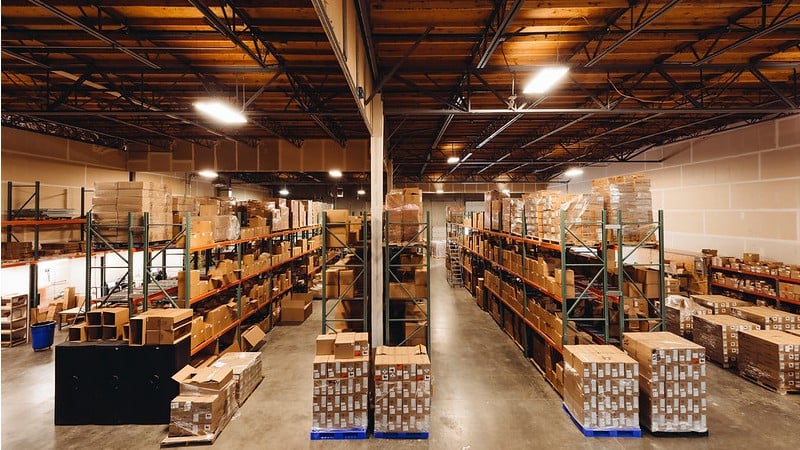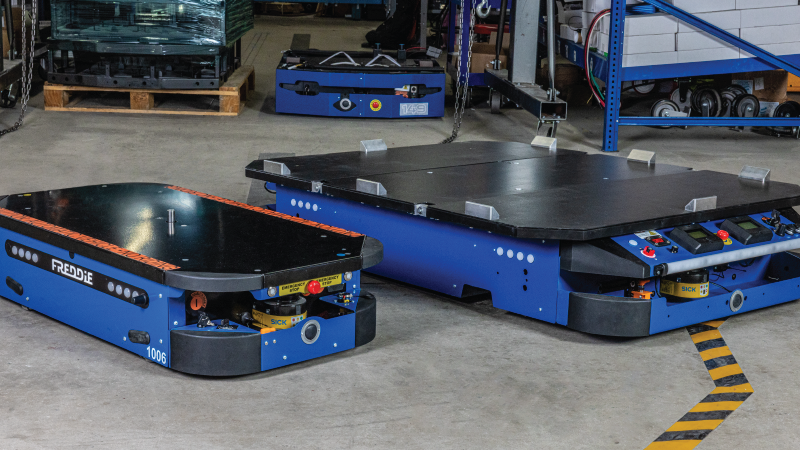The list of use cases for radio frequency identification or RFID—and now referred to by the industry as RAIN—continues to expand. Applications for RAIN include industries such as retail & hospitality, healthcare, industrial manufacturing, aviation, and more. Looking specifically at the warehousing industry, several well-documented RAIN use cases demonstrate meaningful ROI for users.
Businesses that implement RFID warehouse solutions have been able to streamline processes while improving inventory counting efficiency and accuracy, reducing costly human errors and associated waste from mistake-prone tasks, and even overcome some of the challenges associated with labor shortages.
Strategic implementations of RAIN infrastructure throughout a warehouse or DC can save hours of workers’ time verifying inbound and outbound shipments, performing quality control audits, counting and reporting inventory levels, and tracking materials, key assets, and other equipment. RAIN tags can be integrated with process automations and the internet of things (IoT) to tighten controls and streamline the movement of goods, improving safety and compliance, too.
Not least of all, by applying RAIN tags to goods and deploying the right infrastructure in strategic places, a warehouse stands to benefit from the system’s ability to gather generous amounts of highly accurate, real-time data. That can vastly improve planning, budgeting, and much more.
In this article, we’ll take a closer look at some of the most impactful applications for RAIN in a warehouse environment.
But First: How RFID Works in a Warehouse
In a warehouse or DC, labels can be applied to products at the item, carton, or pallet level. Within those labels is a microchip and antenna which then harness the power emitted by a RFID reader to energize the tag and in return it identifies itself. Through the use of GS1 standards, each individual RAIN label is serialized so each individual RFID label is unique.
RAIN readers can range in different form factors. This includes a variety of different handheld devices, to fixed infrastructure mounted to the floor or even suspended from the ceiling like a chandelier. Pending on the use case requirements, RAIN deployments will use different combinations of those devices. These readers will be used to identify and quantify thousands of tagged items simultaneously. Again, depending on the use case requirements, this visibility can be as granular as item level, case level or pallet level. As this information is gathered in real-time, it is often then sent to a Cloud based application for reporting and analytics as well as being integrated into a customers existing WMS or ERP.
To get a clear picture of the opportunities for streamlining operations and eliminating error using RAIN, it can be helpful to envision the opportunities for tags and readers to interact as an item moves through a warehouse, starting at the dock door where goods are received.
Inbound Inventory Verification
If shipments arrive with item level RFID labels already applied (as in, for example, Walmart’s 2022 expanded RFID mandate for suppliers of certain merchandise) RAIN dock door portals can automatically read a pallet of merchandise as it is received and validate the order without even requiring line-of-sight (as barcode scanners need in order to read barcode labels).
That fast, accurate shipment verification enables goods to be moved more quickly—or, in the case of shipping errors, to be refused immediately. That alleviates dock door congestion, reduces labor, and can even help keep drivers more productive.
Just as important and impactful is the data that the RAIN technology makes available for analysis and accessible to trading partners. When all involved parties use GS1 standards, serialized item-level data can not only be used within an organization’s day to day operations, but it can also be shared with trading partners both upstream and downstream. This detailed information can make it easier to sort, track, and account for each item, carton, or pallet throughout the supply chain.
As a result, raw material and source traceability and transparency are improved while items move faster throughout the supply chain.
Tracking & Controlling Goods Throughout Warehouse Operations
As RAIN-enabled products move through a warehouse or DC, the labels can interact with fixed RFID readers at critical choke points such as conveyor lines, pallet wrapping stations and/or dock doors. As cartons or items pass the readers, they are automatically detected. If any inventory discrepancy is detected, those RAIN items traveling on conveyor systems can be automatically diverted or removed for further investigation.
By integrating RAIN infrastructure into workflows throughout a facility, massive amounts of data are generated for analysis delivering actionable insights. Examples include, but are not limited to:
- Reporting of items by location, status, quantities, etc.
- Reporting of inventory overages, underages, etc.
- Shrinkage/loss reporting
- Pick/Pack quality control
- Reporting of shipping/receiving history
- Reporting of asset usage and utilization
- Reporting of asset dwell times
- Reporting of asset cycle turns
- Asset check-in and check-out
Valuable Data for Ops Management
Accurate, real-time inventory visibility is an obvious benefit for preventing inventory outages, shortages, and overages. But that’s just the beginning of what you can do with the data RAIN solutions can provide.
The constant, real-time data gathering capabilities of an RFID warehouse tracking system can enable operations managers to quickly understand movement within the facility and optimize layouts for efficiency. They can also monitor movement and productivity to get useful data on shifts’ performance and better understand obstacles to productivity.
In fact, RFID warehouse solutions’ data-gathering capabilities can actually introduce new data challenges, in the form of more information than you can handle. That’s one important reason to partner with an expert before jumping in with both feet. The right guidance can help you not only optimize reader installations for the most impactful benefits, but it can also help you determine which data sources are most important—as well as just how you’ll handle, store, and analyze the data that matters to you.
Is RFID the Right Solution for Your Warehouse?
Implemented strategically, RFID can deliver transformational results to a warehouse or DC. But it’s not the right technology for every situation, industry, or product. For example, metals or liquids can cause interference between tags and readers. And the tags come at a higher cost than standard barcode labels and tags. Supply chain disruptions can have an impact on RFID tag availability, as well.
All these facts underscore the importance of partnering with an expert to examine your operation’s current needs and future objectives with a holistic approach that considers your processes and people well before determining the best solution and a solid plan for implementation. See what we mean when you download Barcoding’s Guide to Warehouse Growth. It’s free—just click below to claim your copy now.







